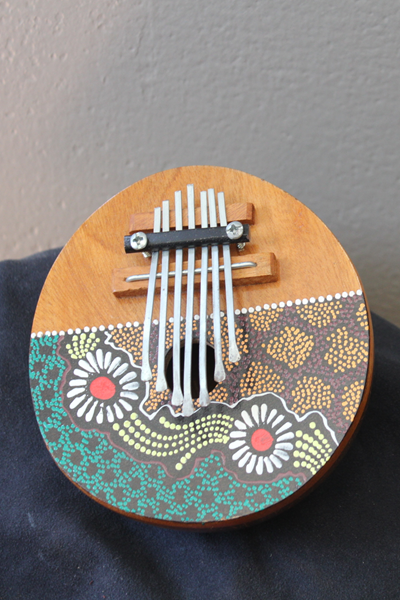A kalimba, also known as a thumb piano or Mbira, is a small African musical instrument consisting of a wooden board (often shaped like a resonating box) with attached metal tines or keys. Here are its key features and aspects:
Construction:
- The kalimba typically consists of a wooden resonator box or board that acts as a sound chamber.
- Attached to this board are metal tines of varying lengths, which are plucked to produce different pitches.
Playing Technique:
- To play the kalimba, the musician holds it in their hands and plucks the metal tines with their thumbs or fingers.
- Each tine produces a distinct note, and the musician can create melodies and harmonies by plucking different combinations of tines.
Sound:
- The kalimba produces a sweet and resonant sound, often described as soothing and melodic.
- The specific timbre and tone of the instrument can vary depending on the size of the resonator box and the materials used for the tines.
Cultural Significance:
- The kalimba has deep roots in African music traditions, particularly among the Shona people of Zimbabwe and other parts of Southern Africa.
- It is used in various ceremonial, ritual, and social contexts, as well as in contemporary African music genres.
- The instrument has gained popularity worldwide and is now used in diverse musical genres and contexts beyond its African origins.
Variations:
- There are different types and designs of kalimbas, ranging from traditional African models to modern interpretations with added features like amplification or tuning adjustments.
- Some kalimbas have additional resonating chambers or modifications to enhance sound quality and versatility.
Overall, the kalimba is celebrated for its simplicity, portability, and enchanting sound, making it a beloved instrument in both traditional African music and global musical practices.
